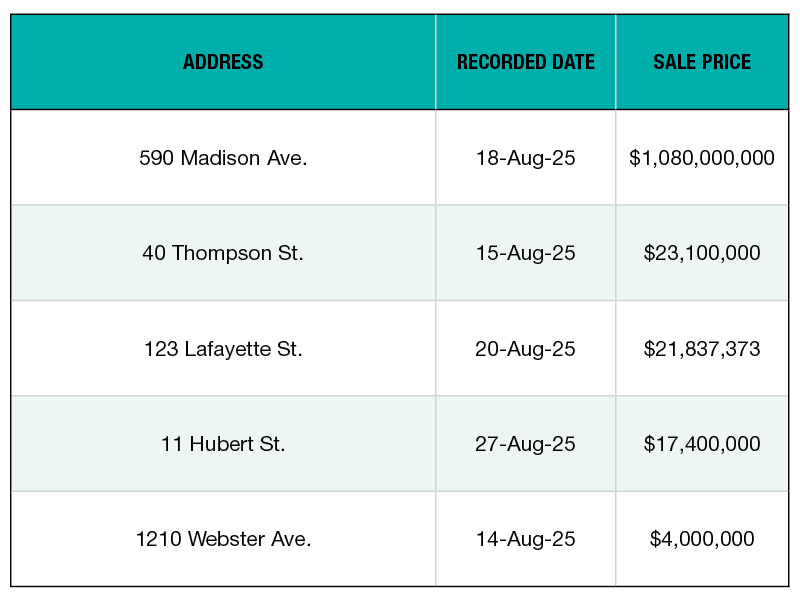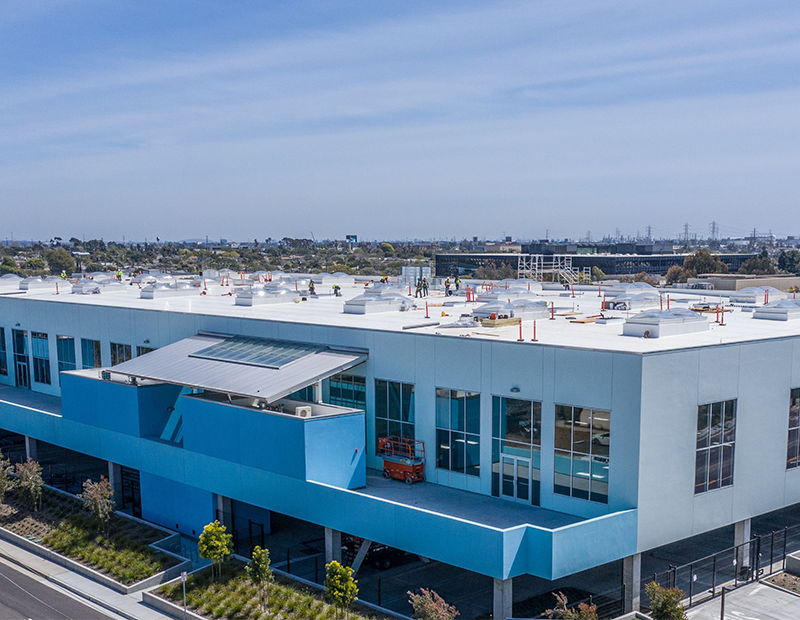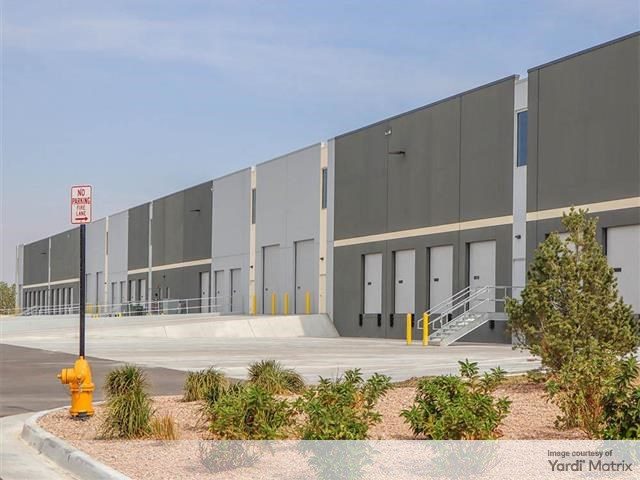CRE’s Mixed Bag of Uncertainty and Opportunity
The industry outlook varies by region and property type, write Kelvin Tetz and Mike Kamienski of Baker Tilly.

A recent real estate market economic update webinar hosted by Baker Tilly painted a complex picture for real estate investors, developers and industry professionals. Here are our key takeaways from the informative session featuring Ken Rosen of Rosen Consulting Group.
Real estate in the U.S. is entering a pivotal moment shaped by demographic shifts, supply constraints, hybrid work trends and emerging sectors.
While delinquencies and foreclosures are rising in many parts of the country, select regions continue to attract financing and see strong demand, renewing the adage that location is a critical consideration amid the uneven impact of policy change and business uncertainty.
READ ALSO: Subscribe to the CPE Capital Markets Newsletter
Housing demand remains resilient thanks to household formation and aging baby boomers, while new construction lags. The office market continues to struggle under the weight of remote work, but retail, hotels and data centers show pockets of strength. For investors, patience, selectivity and a focus on markets with favorable fundamentals will be key as opportunities emerge over the next few years.
Among the sector trends that deserved highlighting, starting with the most challenged:
Office: a market in disruption
The office sector remains under significant pressure from the lasting shift to hybrid work. While the highest-quality AAA buildings in prime locations are performing relatively well, B and C properties—and even some A-minus assets—are struggling with record vacancies and weak absorption. National office vacancy rates are now at historic highs: 23.6 percent for CBDs and 21 percent for suburban offices.
The core challenge is that about a third of workers prefer to work from home, while most employers want staff in the office five days a week. The compromise lands at three to four days for many. Major employers in New York, like JPMorgan and Amazon, are pushing for full returns, and Manhattan offices are largely back. But in markets like San Francisco, in-office attendance remains far below pre-pandemic levels, and sublease space continues to weigh on rents.
With little new construction in the pipeline, struggling office buildings around the country are being converted to apartments—a trend still in its early stages but likely to gain momentum as older buildings become obsolete. For now, office returns remain negative outside of top-tier assets, and investors will need to watch for distress and repositioning opportunities.
Housing demand remains strong but supply lags
Demographics are the foundation of housing demand today. One of the biggest drivers is the aging baby boomer generation, which is expected to fuel major growth in senior housing. At the same time, the 35-to-44 age group is staying in rental housing longer, and the youngest adult cohort is still growing, supporting continued household formation.
While demand is strong, new housing supply has dropped sharply. Estimates suggest even 200,000 new multifamily units this year may be overly optimistic, which means tight supply will help push markets back toward equilibrium, albeit slowly. After a spike in rents during the COVID-19 era, annual rent growth has cooled to around 1 percent nationally. Yet the story varies dramatically by region: Supply-constrained markets with solid local economies, like Manhattan and Silicon Valley, are seeing strong rent growth again. Manhattan rents are up 8.6 percent year-over-year, and San Francisco is posting its first meaningful gains in years.
Meanwhile, in overbuilt Sunbelt cities, effective rents are declining due to weaker occupancy and generous concessions. Over the last five years, rents in many Sunbelt and major metros have climbed 20 percent to 50 percent, but Northern California has lagged, leaving more room for growth as coastal demand rebounds.
Single-family rentals face mortgage headwinds
Single-family rental homes remain an appealing option for investors. However, high mortgage rates, hovering between 6.5 percent and 7 percent, have stalled the resale market. Many homeowners locked into mortgages below 4 percent are unwilling to sell and trade up to a more expensive loan. Resales remain low, while homebuilders are increasing incentives and discounts to keep new construction—about a million units a year—moving. Unless mortgage rates fall meaningfully, the single-family market will likely stay subdued, but buyers who can stretch today may find opportunities to negotiate on price.
Retail: Brick and mortar holds its own
Despite fears that e-commerce would permanently cripple brick-and-mortar retail, the sector has rebounded strongly. E-commerce growth has slowed to about 6 percent annually, down from double-digit gains in the previous decade, while physical stores are expanding at about 3.8 percent as consumers return for in-person shopping experiences.
Retail is now the best-performing sector in terms of total returns. However, leasing remains complex, with many moving pieces and tenant categories to manage. For patient investors who can handle the operational challenges, well-located retail properties are proving resilient and profitable.
Hotels: recovery but below peak
The hotel sector is seeing a healthy recovery as travel demand rebounds. Occupancy rates are improving but still below pre-COVID peaks. Average daily rates, however, have surged—especially in the high-end segment—boosting revenue per available room. Limited new hotel construction and steady leisure and business travel should support continued momentum, though the pace of recovery may vary by market.
AI, data centers and energy: a new frontier
One of the most talked-about growth stories today is the explosive demand for data centers driven by artificial intelligence. Leasing by AI firms is surging nationally, and investors are pouring billions into new data infrastructure. However, the sector faces a major bottleneck: energy capacity, which is driving some data centers to be located purely by energy access. Some projects now take two to three years to secure enough power to come online, and some leases are even structured around kilowatt hours instead of traditional rent.
For now, the demand for data centers looks robust, but investors should watch for signs of potential overbuilding, a pitfall seen previously in life sciences. The energy supply constraint could act as a natural cap on runaway growth.
Opportunity time for investors?
Transaction volumes are down sharply across most property types, reflecting investor caution in an uncertain macroeconomic environment. However, history shows that periods of dislocation often create the best opportunities for investors with staying power and a disciplined approach. Some see parallels to periods when distressed conditions opened rare windows for savvy investors, such as the early 1990s, the early 2000s collapse of the dot-com bubble and the 2008 Global Financial Crisis.
Asked for his personal outlook, Ken Rosen of Rosen Consulting Group said, for those with the right capital and a long-term view, the next few years could offer some of the most attractive buying opportunities in a decade. Such success will require careful market selection, realistic underwriting and a readiness to adapt to a market that looks very different from the pre-pandemic world.
For 2025 and beyond, he said, senior housing, well-located apartments, single-family rentals in constrained markets and niche sectors like data centers stand out as compelling opportunities. Retail is also delivering solid returns for those who can navigate its complexity. Office remains the biggest question mark: Investors must focus on quality and watch for conversion or repositioning plays.
With many REITs still trading 15 percent to 20 percent below net asset value despite recovering from recent lows, he saw potential for carefully structured deals and opportunistic buys. Meanwhile, seasoned owners approaching retirement may want to consider strategies like 1031 exchanges or UPREIT transactions to lock in gains and defer taxes.
Bottom line
Real estate’s fundamentals are adjusting quickly, and individuals and companies should seek out appropriate accounting, tax, legal and other advisors in making their decisions. As Rosen noted, mortgage rates, job growth and the broader economic outlook, including the risk of stagflation or recession, will shape the pace of recovery. Investors and developers focused on the near term will likely remain patient, keep dry powder ready and focus on assets where supply and demand are in balance. Those with long-term outlooks may be eyeing a time of opportunity based on careful market selection, realistic underwriting and adaption to market conditions.
Kelvin Tetz of Baker Tilly has practiced public accounting since 1998. He provides accounting, assurance and advisory services to the real estate and hospitality industries. Mike Kamienski of Baker Tilly serves as the real estate industry leader with Baker Tilly. He specializes in providing accounting and assurance services to clients in the real estate and hospitality industry.







You must be logged in to post a comment.